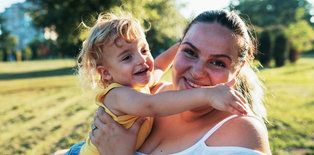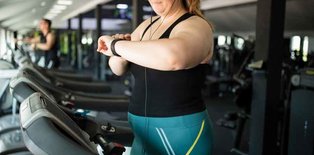Vintage Fitness Trends That Are Great Workouts Today

Once upon a time, physical activity came in the form of farming, hunting, building, and traveling on foot. Today, many of us no longer have those physically demanding lifestyles, so we must find other ways to stay healthy.
To achieve higher levels of fitness, many invest in state-of-the-art home exercise equipment, choose the best training schedules, and buy high-tech gadgets and clothing. While today’s fitness trends look new and innovative, you might be surprised to discover that most come from the past. Vintage fitness trends are not going away because they work. They’re just repackaged with new names.
Old workouts that still work
Calisthenics
The original boot camp and bodyweight training. I remember my parents watching Jack LaLanne (Google him), the exercise guru who made calisthenics popular back in the 60s. His workouts focused on equipment-free moves such as jumping jacks, pushups, and sit-ups. Today we call it boot camp or bodyweight training. The names may be different, but results are the same: improved strength, endurance, and overall fitness without the need for any equipment other than our own body weight. Thanks, Jack!
Dance and Jazzercise
The original Zumba. Dance has been around for thousands of years, as seen in cave paintings in India. Jazzercise founder Judi Sheppard Missett introduced an easy-to-follow fusion of aerobics and dance moves in 1969. While Jazzercise is still a popular way to sweat, the same party-like atmosphere is what attracts hordes of people to Zumba classes today. Created by Beto Perez Zumba in the late 1990s Zumba is a high energy Latin-inspired dance (think merengue and salsa) aerobics class. So you can dance your way to fitness too!
Aerobic Stars
In the 80s came the aerobics craze. For me, fitness gurus like Denise Austin and Kathy Smith were the leaders of choreographed high/low aerobics workouts like step aerobics and the Reebok slide classes. Now we have Beach Body workouts and an assortment of instructional YouTube videos all with the purpose of working us hard, making it fun and targeting every muscle group in the human body. These workouts offer such variety while firing up calorie burning, building agility and aiding in coordination—another ingenious way to improve cardio fitness while partying your way through an hour of sweat.
Other fitness trends with long histories
- We can thank martial arts and boxing for the killer kickboxing workouts still popular today.
- Joseph Pilates, a German gymnast, and bodybuilder created Contrology – mind/body exercises for rehabilitation, strength, balance and toning and called it Pilates. It continues to be a widespread practice for core strength.
- The European dancer Lotte Berk started fusing ballet and sculpt together back in the 40’s and today we have Barre classes.
- Yoga originated between the fifth and third century BC in India. It continues to be a popular posture-based physical fitness, stress-relief, and relaxation technique. With so many traditions, styles, and types of yoga everyone can find their namaste.
The importance of movement
At the Center for Weight and Wellness, I talk to our patients about movement and why it is so important for heart, brain and overall health and well-being. There will always be benefits to checking your pulse, tracking your steps, or lifting weights. In our goal-oriented society, all these are great ways to measure our progress.
Leg lifts, pushups, squats, lunges, kicks, punches, agility, balance, cardio and flexibility are all ways to get in shape and stay fit. It’s good for your heart and the movement is also good for your joints, especially as we age.
Yet do we have to get fancy with our exercise program when movement is just plain good for us? The average person does not have to reinvent the wheel, purchase expensive equipment, or pay for the best fitness memberships. All we need is the will and drive to move!
Vintage fitness trends are like my chunky wedge-heeled shoes. They will keep coming back. So, put on your striped body suit, leg warmers and sweat bands, and get moving.
For more information and tips on exercise and its benefits, visit the Moving section of our Lifespan Living health and wellness blog, or visit this site.
Lifespan Living Newsletter
Find a Doctor

The right provider is in our network
Search more than 1,200 providers in our network.



